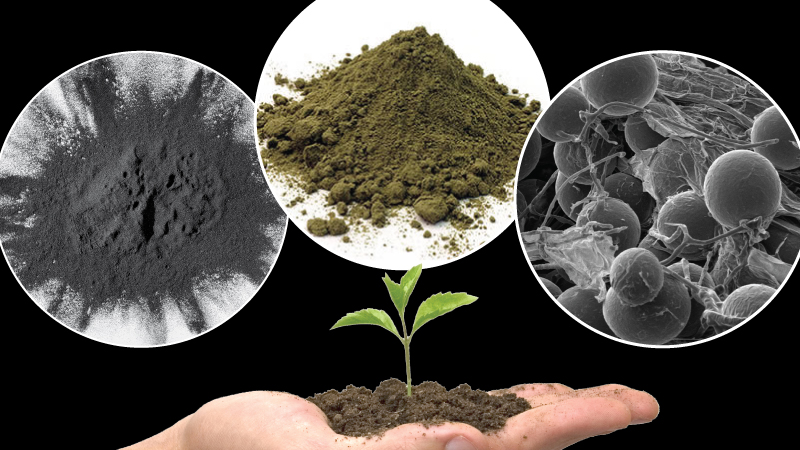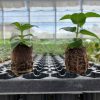What is a Biostimulant?
Biostimulants are a broad and emerging topic, with a lot of attention and new products hitting the markets in recent years. The current value of the global agricultural biostimulant market is over $3 billion with an expected 3% increase annually. Europe is the largest and fastest-growing segment of the biostimulant market but there is considerable interest in the US, as well. These kinds of products tend to defy characterization under traditional growing input terminology, and the catch-all term of biostimulant is still in the process of being defined and refined. However, with the passage of the Farm Bill and US and international regulatory organizations starting to take a closer look at these kinds of products, this is an important topic for growers to keep an eye on as well. Not to mention the fact that these products can offer many important benefits to growers as well!
A “Biostimulant” is defined in the 2018 Farm Bill as “a substance or microorganism that, when applied to seeds, plants, or the rhizosphere, stimulates natural processes to enhance or benefit nutrient uptake, nutrient efficiency, tolerance to abiotic stress, or crop quality and yield.” It is important to mention that the regulatory framework is still in development and there are still several “grey areas” how a specific compound should be regulated. Although these kinds of substances, organisms, and products aren’t new to agriculture or horticulture, the terminology and grouping of biostimulants are still very new. With all of the biostimulant buzz going on in the green industries, we wanted to take a moment to help expand the industry’s understanding of biostimulants, and how to sort through the different types, the products available, and how growers can utilize these tools to benefit their operations.
Types of Biostimulants:
- Organic Compounds:
- Humic Substances
- Humics
- Humic acids
- Fulvic acids
- Seaweed/Kelp Extracts
- Amino Acids
- Humic Substances
- Microorganisms:
- Beneficial Bacteria
- Beneficial Fungi
- Others:
- Protein Hydrolysates
- Chitosan
- Inorganic Compounds
- Etc.
What Benefits do Biostimulants Provide?
Biostimulants are not fertilizers or pesticides but rather improve plant health and/or crop performance regardless of nutrient availability, growing conditions, etc. They are safe and environmentally sound complements to chemical fertilizers and pesticides. This is an important thing to note, because biostimulants themselves do not provide nutrient content (e.g. NPK), but they can improve and speed up many processes that support plant nutrition, such as nutrient availability, cation exchange, etc. Biostimulants are also not pesticides, however, some can increase a plant’s resistance to pest and disease pressure by stimulating and bolstering a plant’s natural defenses.
Organic acids like humic and fulvic acids have been known for centuries to be essential to healthy soil and plant habitat, however, the exact mechanisms are still unknown. Many studies have shown that these substances, even in small amounts, have a significant effect on a plant’s nutrient uptake processes. At this time, it is well established that humic acids aid a plant in its ability to absorb and utilize nutrients.
Seaweed and kelp extracts can act as a food source for plants (and actually contain NPK values) as well as biostimulants. In soils they act as chelating agents, making nutrients available to plants and improving soil structure. These substances have also been shown to increase a plant’s natural resistance to fungal or bacterial pathogens, improve the thermal resistance of plants, and minimize plant drought stress.
Beneficial microorganisms such as fungi and bacteria vary in their effects on plant vitality, nutrient utilization, and water efficiency. These mechanisms are complex and are very specific to microorganism type, and often to species and/or strain of these organisms. In general, the application of these kinds of organisms can be thought of like a probiotic. By adding the beneficial organisms that support plant performance, growers are able to influence the soil ecosystem or rhizosphere to the benefit of the plant/crop. These organisms often work in a symbiotic association with plants and/or other microorganisms.
Main Benefits of Biostimulants:
The European Biostimulants Industry Council lists the benefits of biostimulants as:
- Improving the efficiency of the plant’s metabolism to induce yield increases and enhanced crop quality.
- Increasing plant tolerance to and recovery from abiotic stresses.
- Facilitating nutrient assimilation, translocation, and use.
- Enhancing quality attributes of produce, including sugar content, color, fruit seeding, etc.
- Rendering water use more efficient.
- Enhancing soil fertility, particularly by fostering the development of complementary soil micro-organisms.
Conclusion:
Although the topic of biostimulants is still relatively new, the benefits and efficacy of these types of products are becoming more and more clear. Growers/farmers have been using many of these technologies and substances for millennia, the 2018 Farm Bill definition helped to establish definitions surrounding these products, and now more than ever growers need to understand this diverse product category. This category includes compounds and organisms that have complex relationships with plants, other soil-borne organisms, and the rhizosphere as a whole.







